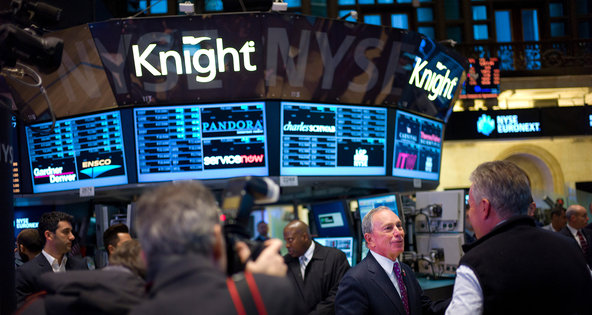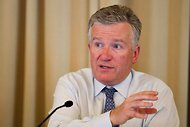The better sentiment also put Wall Street on course for a higher open when trading resumes after Monday’s holidays in the major centers. All three major stock indexes ended last week in negative territory for the first time since mid-April.
Heightened expectations the U.S. central bank could soon taper its stimulus program unleashed turbulence across the markets last week, leaving it to central banks in Japan and Europe to reassure investors their liquidity taps remain open.
“I expect the major markets to test resistance levels of last week as investors are still seeking higher highs and new record levels in the near term, whilst the central banks are continuing their quantitative easing operations,” said Tom Robertson, senior trader at Accendo Markets.
Equity markets around the world have traded at their highest levels in years encouraged by cheap funding from the Fed and other central banks. But comments last week by Fed chairman Ben Bernanke suggesting a U.S. recovery could bring a shift in policy have made investors question prospects for further gains.
“We have had a significant move higher and now it’s time for taking stock and deciding whether we continue to go higher or we are due a correction,” Michael Hewson, Senior Market Analyst at CMC Markets said.
The question is being asked most about the Japanese market, where the Nikkei stock index had reached a 5-1/2-year high before dropping 7.3 percent last Thursday – its largest one-day loss since the March 2011 earthquake and tsunami.
The Nikkei steadied on Tuesday, ending 1.2 percent higher after long-serving board member Ryuzo Miyao said the Bank of Japan would fine-tune market operations to ensure its unprecedented easing campaign is not derailed.
Central bank officials lifted sentiment in Europe, where the broad FTSE Eurofirst 300 index rose over 1.3 percent by mid-morning, adding to Monday’s 0.3 percent rise. European Central Bank Executive Board member Peter Praet said the ECB could still cut interest rates further to stimulate the economy if needed.
Tuesday’s rebound took Germany’s DAX up 1.1 percent to near recent record highs. In London, the FTSE 100 index was up 1.67 percent, led by banking stocks.
MSCI’s world equity index had risen 0.3 percent by mid-morning, reversing four days of losses.
SAFETY ABANDONED
Assets seen as safe havens fell, leaving the dollar up 0.7 percent against the Swiss franc at 0.9697 francs. “The yen and Swiss franc have dropped noticeably this morning, essentially because risk assets seem to be stabilising,” said Societe Generale currency strategist Alvin Tan.
The euro was down 0.2 percent at $1.2910 against the dollar, trading well within its recent range of $1.28-1.32.
Investors also deserted German government bonds although the talk of an ECB rate cut lent support. The yield on the 10-year bond was down 1 basis point at 1.43 percent.
Commodity markets remain pressured by an uncertain demand outlook after U.S. and Chinese data last week.
The rising dollar also makes some dollar-based commodities more expensive for non-dollar holders. Spot gold was down 1 percent to $1,380.50 an ounce.
However the better tone on equity markets and signs of rising Middle East tension support oil. U.S. crude futures gained 0.7 percent to $94.78 a barrel and Brent rose 1.4 percent to $104 a barrel.
(Additional reporting by Atul Prakash and Anooja Debnath. Editing by Catherine Evans)
Article source: http://www.nytimes.com/reuters/2013/05/28/business/28reuters-markets-global.html?partner=rss&emc=rss

